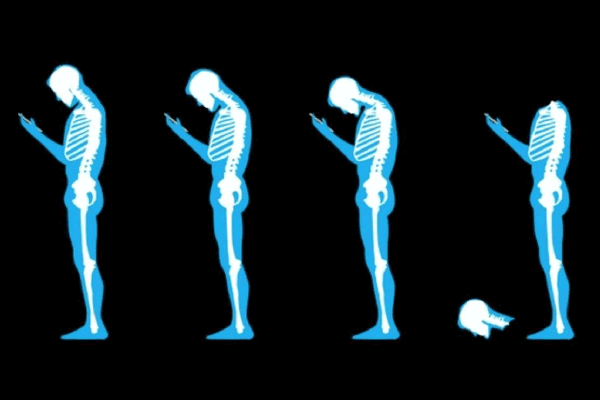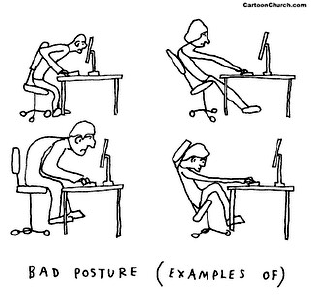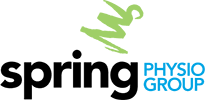The Unhappy Neck
28 June 2023 | By Ann Ryan

The neck (cervical spine) is susceptible to degenerative problems and pain syndromes because it is very mobile, it carries the weight of the head and the anatomy is complex. Most commonly, however, neck pain develops because we take it for granted.
The cervical spine consists of the top seven vertebrae (C1-7) of the spine. The upper levels (C1-2) have an unusual structure and, in their attachments to the base of the skull, are highly evolved to both control head position and provide positional awareness to co-ordinate information from the vestibular (spatial), auditory (hearing) and visual (sight) senses.
The lower cervical spine levels (C3-7) play a role in the larger movements of the head and are more typical of other vertebrae with discs and facet joints, plus tiny uncinate joints that assist in stability. As in the rest of the spine, between each cervical level and on each side, a spinal nerve exits to supply sensory and motor function to its designated area – including the head, shoulders and upper limbs.
How does your posture influence the load on your neck?

The cervical spine has a natural concavity backwards (lordosis) to counteract the natural concavity forwards (kyphosis) of the upper trunk. This makes it easier for us to look upwards. Unfortunately, it also makes it easier for us to simply lift our chins up to look straight ahead when we are bending forwards or slouching.
When you are perfectly upright, the weight of the head (about 5kg!) sits balanced on your trunk with minimal muscle effort required and an evenly spread load through your discs and joints. If you lean forwards just 15º the weight of the head is more like 12kg and at a 45º angle the load increases to 22kg.
When you are hunched over at a 60º angle looking at your phone the relative weight of your head on your neck is 27kg! This load places enormous pressure on the discs and strains the joints, ligaments and muscles trying to hold it in place.
Sustained forward head posture leads to tightness and shortening of the muscles and soft tissues in the mid-upper neck and anterior chest/shoulders and weakness of the deep neck, upper back and posterior shoulder muscles. Furthermore, the discs of the lower cervical spine (C5-7) become compressed, which gradually leads to loss of disc height and shock absorption capability and increased pressure on surrounding structures. These factors may lead to neck and shoulder pain, headaches and accelerated degenerative changes.
What can you do to make your neck happy?
Firstly, begin by addressing the contributing factors:
- Stretch short and overactive neck, chest and shoulder muscles.
- Strengthen weak and underactive upper back and posterior shoulder muscles.
- Adjust your work station to optimise a balanced posture.
- Build better awareness of your habitual postures in sustained positions such as driving, using your phone and computer, standing.
On a more sophisticated level, at Kooyong Physiotherapy Centre and Spring Physio Gym your physiotherapist will determine the structural, postural and muscle patterning contributions to your neck problem and help you develop pathways to resolve your musculoskeletal pain and dysfunction. Some of these pathways are remarkably simple and effective once you start and your neck will thank you in the long term!





